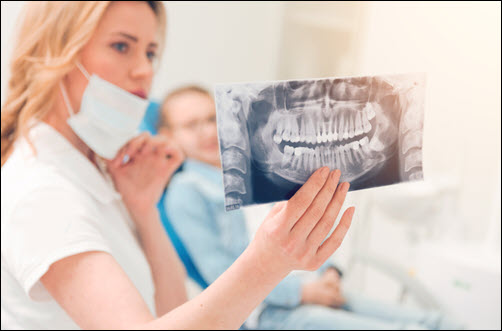The journey to a healthy and comfortable smile sometimes involves making decisions about the removal of wisdom teeth, also known as third molars. While the prospect of this procedure may seem daunting, understanding what’s involved can help ease any anxiety and provide clarity about the process. In this blog post, we’ll take you through the steps of removing wisdom teeth and what you can expect before, during, and after the procedure.
Why Wisdom Teeth Removal?
Wisdom teeth are the last set of molars to emerge, usually between the ages of 17 and 25. Often, there isn’t enough space in the mouth to accommodate these new teeth, leading to various potential problems such as pain, infection, crowding, and damage to adjacent teeth. Removing wisdom teeth is a preventive measure to avoid these issues and maintain oral health.

The Process: Before, During, and After:
Before the Procedure:
Consultation: Your dentist or oral surgeon will assess your wisdom teeth through X-rays and a thorough examination. They will determine whether removal is necessary and discuss the details of the procedure with you.
Preparation: You may need to fast before the procedure, especially if you’re going to be under general anesthesia. Arrange for someone to drive you home after the surgery if anesthesia is used.
During the Procedure:
Anesthesia: Wisdom teeth removal can be done under local anesthesia (numbing the area) or general anesthesia (you’ll be asleep throughout the procedure). Your dentist or oral surgeon will discuss the best option based on your case.
Extraction: The extraction process varies based on the tooth’s position and condition. If the tooth is impacted, the oral surgeon will make an incision in the gum and may need to remove bone to access the tooth.
Stitching: After the tooth is removed, stitches may be placed to promote healing. These stitches can be dissolvable or require removal a few days later.
After the Procedure:
Recovery: You’ll be given specific aftercare instructions, including how to manage swelling, discomfort, and potential bleeding. Applying ice packs, taking prescribed pain medication, and eating soft foods can aid in recovery.
Rest and Healing: Allow your body time to heal. Avoid strenuous activities for a few days and follow your dentist’s guidelines for proper oral hygiene during the recovery period.
Follow-Up: Attend any follow-up appointments as scheduled. Your dentist will monitor your healing progress and ensure everything is on track.
Recovery Timeline:
Recovery times vary from person to person, but generally, you can expect:
- Swelling and discomfort for a few days
- Gradual healing of the extraction site over several weeks
- Back to regular activities within a week or two
Conclusion:
Removing wisdom teeth is a proactive step toward maintaining your oral health and preventing potential complications. While the process might seem complex, understanding the procedure can help alleviate any concerns you might have. Remember, clear communication with your dentist or oral surgeon is crucial to ensure a smooth and comfortable experience throughout the entire process. Rest assured that wisdom teeth removal is a common and well-practiced dental procedure designed to enhance your oral well-being. Check out our Extractions Page to learn more.

